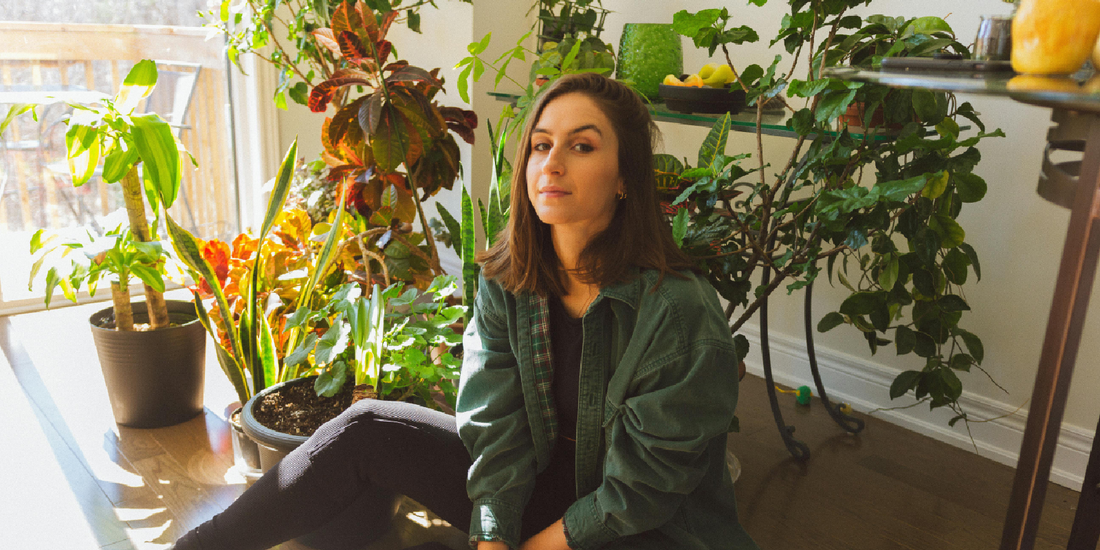
How to Maximize Small Plant Growth on Each Tier
Share
Indoor gardening has become more than a hobby—it is a way of life that connects modern living spaces with nature. For plant enthusiasts with limited room, the amoyls VerdantGlow S-Shaped 8-Tier Plant Shelf with Grow Lights offers a stylish and highly functional solution. Its vertical S-shaped design not only saves space but also provides structured levels where small plants can thrive. However, to truly maximize plant growth on each tier, you need a thoughtful approach that combines plant selection, positioning, lighting, watering, and long-term maintenance.
This guide explores practical methods to ensure that every level of your VerdantGlow shelf becomes a lush, healthy, and vibrant green corner of your home.
1. Understanding the Tiered Structure
The S-shaped 8-tier design is more than a visual statement. Each curve and shelf tier creates micro-zones of light exposure, airflow, and humidity. To maximize growth:
- Upper tiers usually receive the most direct artificial grow light and natural sunlight if placed near a window. These levels are ideal for light-hungry species.
- Middle tiers experience balanced light intensity, making them perfect for medium-light plants that prefer stable conditions.
- Lower tiers tend to have slightly less light and higher humidity. They are suitable for moisture-loving plants or trailing varieties.
By recognizing these variations, you can strategically place each plant where it will thrive best.
2. Choosing the Right Plants for Each Tier
Not every plant grows equally well under artificial lights or in vertical arrangements. A tiered system demands careful matching of plants to their micro-environments.
Upper Tiers – Light Lovers
Plants suited for stronger light intensity include:
- Succulents and cacti (Aloe, Haworthia, Echeveria)
- Herbs (Basil, Thyme, Oregano)
- Compact flowering plants (African violets, Mini roses)
Middle Tiers – Moderate Light Plants
- Ferns (Boston fern, Maidenhair fern)
- Pothos and Philodendron
- Spider plants
Lower Tiers – Shade Tolerant and Humidity-Loving Plants
- Peace lily
- Calathea and Maranta
- Moss terrariums
Matching plants to tier conditions reduces stress and encourages fuller, healthier growth.
3. Optimizing Light from the Built-In Grow System
The VerdantGlow stand comes with integrated grow lights that provide full-spectrum coverage. But simply turning them on isn’t enough—you need to optimize their use.
- Adjust duration: Most small plants require 12–16 hours of light daily. Use a timer to maintain consistency.
- Balance intensity: Place more light-sensitive plants closer to the edges or middle shelves to avoid leaf burn.
- Supplement with natural light: If the shelf is placed near a window, align plants so they receive both natural and artificial light.
Regularly clean the grow light covers to prevent dust buildup, which can reduce light penetration.
4. Smart Watering Techniques for Tiered Plants
Watering becomes more complex in an 8-tier system, as excess water from upper shelves may drip onto lower plants. To prevent overwatering:
- Use saucers or trays under pots to catch runoff.
- Group plants by water needs: Place thirsty plants beneath those with higher water requirements.
- Check soil moisture individually: Do not assume all plants on a tier have the same needs.
A lightweight spray bottle or narrow-spout watering can makes it easier to reach plants without disturbing the arrangement.
5. Enhancing Air Circulation
Good airflow is critical in preventing mold and pests. The S-shaped shelf naturally promotes circulation, but you can enhance it further:
- Leave space between pots for air to move freely.
- Use small fans nearby on low settings to simulate outdoor breezes.
- Rotate plant positions weekly so all sides receive balanced airflow and light.
6. Maximizing Vertical Aesthetics and Growth
One of the biggest advantages of the VerdantGlow is its vertical design, which doubles as a home décor feature. To balance beauty with growth:
- Stagger plant heights: Place tall species on lower tiers and trailing plants on higher levels to cascade downward.
- Color coordination: Combine deep green foliage with variegated or flowering plants for a layered effect.
- Tier rotation strategy: Move plants seasonally—placing summer growers higher in brighter spots, while relocating dormant species to lower tiers.
This creates a constantly evolving visual appeal while ensuring each plant’s health.
7. Soil and Fertilization for Compact Plants
Since many of the plants you place on this shelf will be smaller varieties, the right soil mix is crucial.
- Succulents/cacti: Fast-draining sandy soil.
- Ferns and tropicals: Rich peat-based mixes with good aeration.
- Herbs and leafy greens: Balanced loam with added compost.
Fertilize lightly every 4–6 weeks during active growth. Opt for slow-release pellets if you want minimal maintenance.
8. Using Accessories to Boost Growth
Small accessories can help optimize each tier:
- Humidity trays on lower tiers prevent dry air stress.
- Clips and mini trellises support climbing or vining plants.
- Self-watering pots reduce the risk of inconsistent watering.
Even decorative stones or moss toppers on soil help regulate evaporation and keep the micro-environment stable.
9. Pest Prevention and Plant Health
With multiple plants in close proximity, pests can spread quickly. Preventative care is essential.
- Inspect weekly: Check for aphids, spider mites, or fungus gnats.
- Neem oil or insecticidal soap works well for natural treatment.
- Quarantine new plants before adding them to the stand.
By acting early, you protect every tier from infestations.
10. Seasonal Adjustments for Year-Round Growth
Plants respond differently across seasons—even indoors. To adapt:
- Winter: Increase light duration to compensate for shorter days, and reduce watering frequency.
- Spring/Summer: Fertilize more frequently and rotate sun-loving species to top tiers.
- Autumn: Prune and repot as necessary to prepare plants for dormancy.
The built-in grow lights ensure year-round stability, but seasonal tweaks fine-tune growth performance.
11. Creating a Sustainable Routine
Consistency is the key to maximizing plant growth. Develop routines that include:
- Daily: Quick light check and soil surface observation.
- Weekly: Watering schedule, cleaning leaves, rotating plants.
- Monthly: Fertilization, pruning, pest inspection.
By embedding these steps into your lifestyle, the VerdantGlow shelf becomes a self-sustaining micro-garden.
12. Why amoyls VerdantGlow Is Ideal for Small Spaces
Unlike traditional plant racks, the amoyls VerdantGlow S-Shaped 8-Tier Plant Shelf with Grow Lights is designed specifically for modern homes:
- Space-saving vertical design ideal for apartments and compact rooms.
- Integrated grow lights eliminate the need for bulky external setups.
- Modern aesthetic blends with contemporary interiors.
It represents a fusion of practicality and design, enabling plant enthusiasts to cultivate lush greenery without compromising on space.
Conclusion
Maximizing small plant growth on each tier is a combination of science and artistry. By carefully choosing plants, optimizing light and water, maintaining airflow, and adapting seasonally, you can transform the amoyls VerdantGlow shelf into a thriving miniature indoor jungle. Each level tells its own story—whether it’s bright succulents reaching upward, ferns unfolding mid-level, or calming shade plants grounding the bottom tiers.
With patience and consistency, your 8-tier S-shaped stand will not only maximize plant health but also enrich your living environment with beauty, tranquility, and sustainable greenery.
